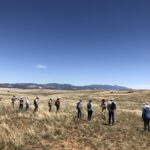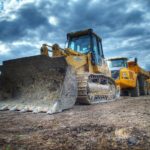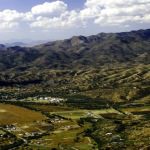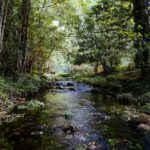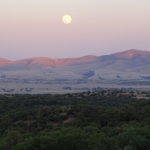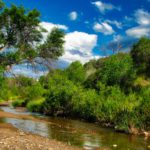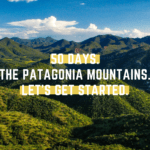At Patagonia Area Resource Alliance (PARA), our mission is to protect the water and wildlife from the pressures and realities of 21st-century industrialized mining. As such, we have watched, with concern, the current U.S. administration weaken long-standing environmental laws at a national level. From rolling back the National Environmental Policy Act (NEPA) to repealing parts of the Clean Water Act that “significantly narrows and limits which waters and wetlands are protected under the Clean Water Act from pollution, degradation and destruction” (source: Earthjustice), these directives harm the environment and negatively impact global chances to stop climate change.
The results of the November 3, 2020 election will likely determine how these issues (and the ones in Arizona’s Santa Cruz County, listed below) progress. To ensure positive change, it is up to us—people in our local and state communities—to push back against these mounting environmental issues. One of the many ways we can do this is to mobilize against the plans of corporations and government agencies by 1) voting, 2) calling and emailing Santa Cruz County supervisors about local mining concerns, and 3) submitting an op-ed to a local newspaper. (For op-ed writing tips, keep reading!)
Environmental Concerns in Santa Cruz County
While national issues are mounting ahead of the 2020 election—which is only two months away—so too are local issues in Santa Cruz County. The Town of Patagonia and surrounding areas face widespread road and water impacts from senior Australian mining company South32. These impacts threaten the people and wildlife that rely on the region for water and shelter.
Roads Issues:
On August 4th, South32 held an invitation-only presentation for Red Rock Acres property owners. They officially declared their chosen exit route during this event: the “Cross Creek Connector” route that runs from Harshaw Road (just outside the Town boundaries) to State Highway 82. South32 then intends to proceed east on Highway 82 to Sonoita, where they’ll turn onto Highway 83 and head for Tucson. (Here are the slides and meeting minutes from the August 4th meeting.)
To make this chosen exit route a reality, South32 will need to construct a 32-foot wide industrial arterial road for heavy trucks to use while transporting ore between the mine site and Tucson. In order to connect Harshaw Road to State Highway 82, they plan to put the industrial road through a rural residential area.
Common sense says the proposed arterial road should require rezoning and other permitting processes, which would give residents the opportunity to challenge South32’s plans. However, PARA has been told by Santa Cruz County staff that the mining company can put in this arterial road without even going through a rezoning process.
The communities in Santa Cruz County must speak up about these processes. The arterial road South32 wants to put in will have a huge negative impact, creating safety issues that threaten the land, residents, and businesses that live and operate along Highways 82 and 83. If rezoning and permitting processes are not required, for-profit mining corporations will be left unchecked and cause ecological, biological, and residential damage for years to come.
Read more in this article from the local newspaper, Patagonia Regional Times.
Water Issues:
The 128,000-acre Sonoita Creek Watershed is a major tributary to the Santa Cruz River and the greater watershed that serves more than a million people. It is also the only source of potable water for the Town of Patagonia with over 900 residents and 300 private well users within a three-mile radius of town. The shallow depth of the aquifers, combined with the nature of the soils and underlying geology, make the relationship between the surface and groundwater watersheds a particularly close and interconnected one.
In an August public presentation to the Patagonia Town Council, South32 shared their plans for a “dewatering project” in the Sonoita Creek Watershed. The minerals this company wants to mine are located about 1,500 feet below ground. Meanwhile, the water level is at 100 feet. The company’s proposed water drawdown (estimated at 1.6 billion gallons of water per year for the first four years, followed by water withdrawal during operation) will dramatically reconfigure the watershed and significantly impact the ability for species survival in and around the Patagonia Mountains, a dry Sky Island range in an already drought-affected region.
Learn more about the Sonoita Creek Watershed in this video.
Arizona is considered one of the top ten most mining-friendly jurisdictions in the United States, and this status allows foreign mining companies to easily access minerals and metals in sensitive and biologically diverse areas without much oversight from the Forest Service. The state of Arizona’s pro-mining position makes both voting against and opposing these issues critical.
How to Write an Op-Ed
Here are three tips for writing and submitting an op-ed to your local paper. (In Santa Cruz County, this includes the Patagonia Regional Times and the Nogales International.)
#1. Keep it short.
Readers are more likely to engage with community letters when they’re kept short and pointed. While writing, quickly state what the issue is and what you’d like local residents to do about it. If you need help figuring out how to structure your letter, consider reading a few already-published op-eds before you start drafting.
You’ll also want to check with the paper to see what their requested word limit is. Make sure to stay within the limit provided (usually 300-500 words). Otherwise, the paper’s editor may trim portions of your letter, which could unintentionally change the meaning of your message.
#2. Tell the reader who you are.
Readers often want to know a little about the op-ed’s author. In the body of the letter, make sure to state who you are (your name and any community affiliations you have), where you live, and why this specific issue matters to you. What stakes do you have in the issue, and why do you support/oppose it?
For example, if a proposed road will run through your residential community, tell the reader that and share how the construction and use of this road will affect your health, wellbeing, property values, family safety, business, etc.
#3. Include a call to action.
You’ve hooked the reader and have successfully given them a short, to-the-point view of your community issue. You’ve also included who you are and why the issue matters to you. Now comes the final part: ending the op-ed with an action call.
As you write, think about what you want the reader to do. What is the takeaway of your op-ed? Should they call a county representative and ask them to support/oppose the issue? Should they vote in the upcoming election? Should they join a protest you’re putting together? Or perhaps the call-to-action is simply a request for the reader to think about their role in these concerns—do they have a stake in the issues you’ve described? There is no right or wrong way to write a call-to-action. Every one is different; you’ll know what is needed once the draft is complete.
Need additional guidance? While we can’t write your op-ed letter for you, we (the team at PARA) can help you track down word limits, send you resources on mining risks that you can use in your writing, and more. Feel free to contact us at info@patagoniaalliance.org with any op-ed writing questions you might have.


